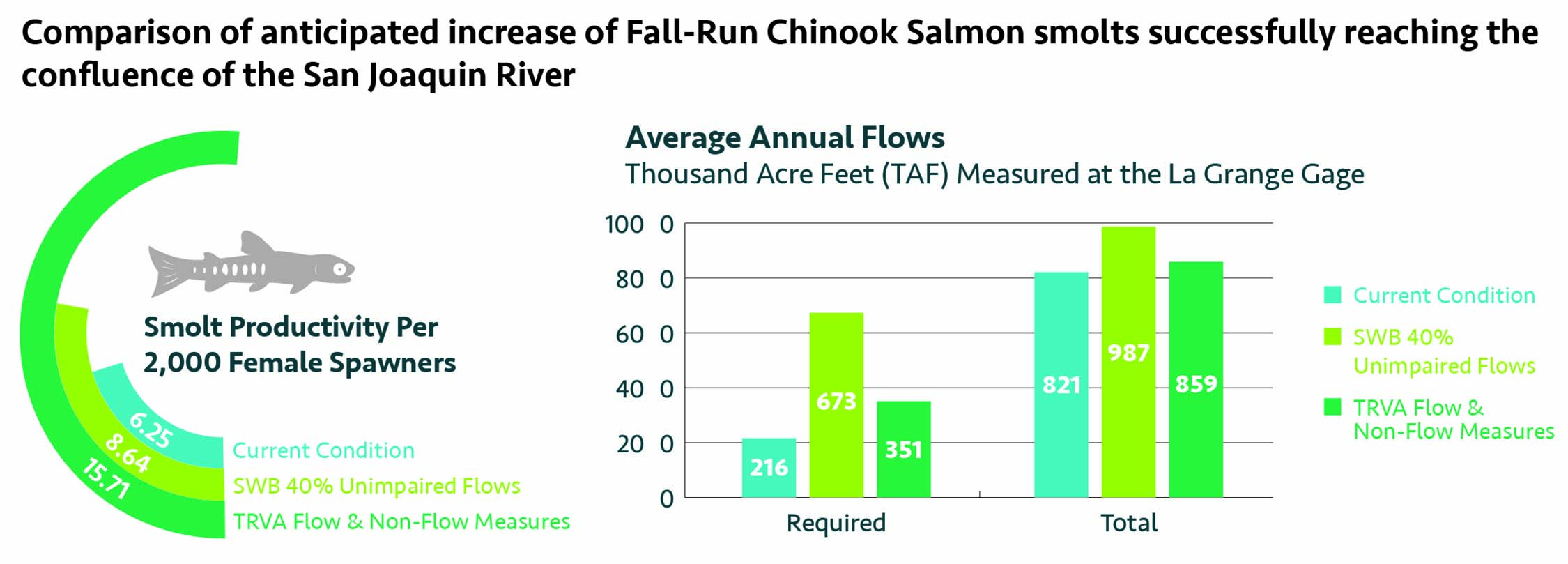The TRVA is a comprehensive plan to manage water and natural resources within the Tuolumne River and its adjacent floodplains. Built on decades of monitoring, data collection and multiple Tuolumne River-specific scientific studies, the TRVA was designed as a more progressive alternative to a requirement set by the State Water Resources Control Board to release large volumes of water known as “unimpaired flows” in the river. It represents a superior approach for improving fishery conditions while protecting the region’s important economic and recreational assets.
Development of the TRVA is the result of close collaboration and good faith discussions among the three public agency Partners and numerous stakeholders. The stakeholders have included federal and state agencies including the California Department of Water Resources and the California Department of Fish and Wildlife, scientists, and environmental stewards. The TRVA is broadly supported by the TRVA Partners, along with more than 40 other public water agencies, government agencies, environmental stewards, agricultural representatives and business and civic leaders.
KEY ELEMENTS OF THE TRVA
Elevated River Flows for the Environment
More water for all year types: Enhanced flows will occur in all water year types, even the most challenging, from just over 24,000 acre-feet of greater flows to approximately 110,000 acre-feet above current requirements.
Responding to hydrological variation. The TRVA provides a variable flow schedule for every season of every water year type to meet in-river life cycle needs of native fish species.
-
In dry and critically dry years, for example, the TRVA will provide 75 to 125 cubic feet per second (cfs) of water to serve environmental needs, which is more than under the current flow schedule.
-
Depending on water year type, a new floodplain pulse flow of 2,750 cfs for up to 20 days will be released to enhance fish habitat.
-
A spill management program will maximize river release benefits for fall-run Chinook salmon floodplain rearing.
Improved Habitat and Predation Control to Support Fish Populations
Habitat improvements. The TRVA partners are investing $83 million for non-flow measures in and along the river to support native fish species throughout their in-river life cycles, including:
-
Increased gravel to support and improve spawning.
-
Creation of additional quality habitat for fish, including enhanced and increased in-channel and floodplain habitat.
-
Placement of large woody debris to improve habitat complexity.
Predation Control: The TRVA includes active control measures targeting striped and black bass that prey on juvenile out-migrating salmon.
THE TRVA PROVIDES MULTIPLE BENEFITS
Enhancing Fish Populations
Flow and Non-Flow Measures. The TRVA contains flow and non-flow measures designed to enhance in-river spawning, rearing, and out-migrating conditions to help more juvenile salmon survive. Salmon productivity is expected to increase by 150 percent over current conditions and more than 80 percent over conditions in the State Water Board’s Bay-Delta Plan Update flow regime.

Preserving Water Supply for a Strong Economy
Cross-sector Benefits. Water supplies will be protected for agricultural, business, and municipal interests served by the TRVA Partners. Economic savings are estimated at nearly $50 billion in economic output. Job creation is estimated at more than 194,000 jobs.


